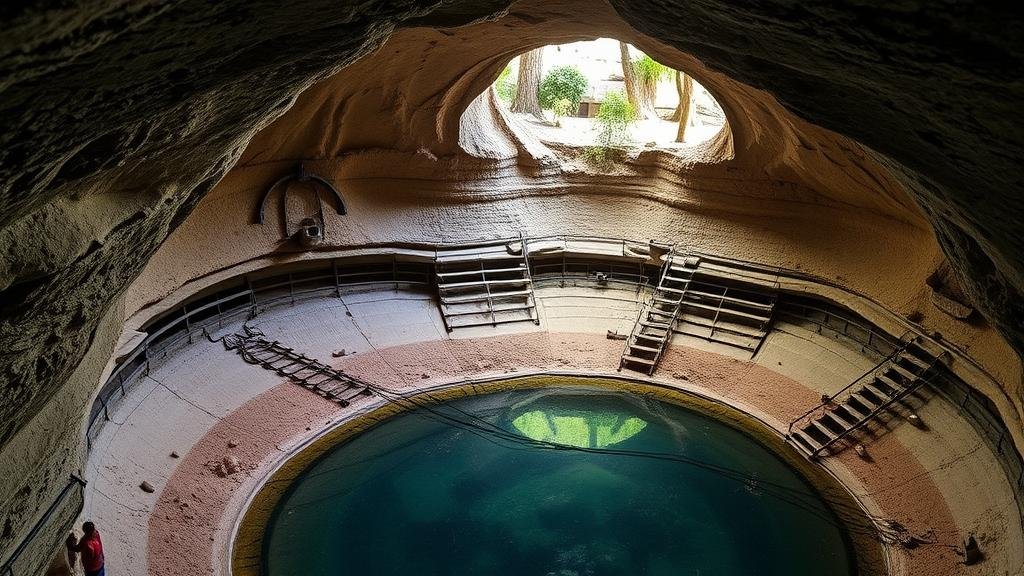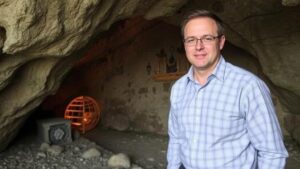Exploring uncharted sinkholes with connections to ancient tunnel systems.
Exploring Uncharted Sinkholes with Connections to Ancient Tunnel Systems
Sinkholes, those enigmatic depressions in the ground, have long fascinated scientists, adventurers, and historians alike. They represent not just geological anomalies, but significant gateways to understanding ancient civilizations through subterranean connections. This article explores the intricate relationship between uncharted sinkholes and ancient tunnel systems, highlighting specific cases, historical contexts, and the profound implications of these discoveries.
The Formation of Sinkholes
Sinkholes form primarily through the process of erosion, particularly in limestone areas, where slightly acidic rainwater dissolves the rock over time. This leads to the creation of underground cavities, which can eventually collapse, resulting in a sinkhole. According to the United States Geological Survey (USGS), areas like Florida and the Yucatán Peninsula are particularly prone to sinkholes due to their karst topography.
- The most extensive sinkhole record in the USA is linked to Florida, where approximately 20% of the state is underlain by limestone.
- The first scientifically documented sinkhole, known as the Great Blue Hole, is located off the coast of Belize and is estimated to be over 10,000 years old.
Ancient Tunnel Systems: A Glimpse into History
Ancient tunnel systems, often built for purposes such as transportation, water management, or defense, reveal unique insights into historical civilizations. For example, the ancient city of Derinkuyu in Cappadocia, Turkey, consists of an extensive network of underground tunnels that descend over 60 meters into the earth. This system could accommodate thousands of inhabitants, showcasing the ingenuity of humans in utilizing subterranean spaces for survival and safety.
These ancient tunnels often intersect with sinkholes, presenting a fascinating dichotomy of geological and archaeological interest. Some researchers have theorized that sinkholes might have served as entrances to these tunnels, providing secretive access points for their users.
Notable Sinkholes and Their Ancient Connections
Several significant sinkholes across the globe have shown connections to ancient civilizations, facilitating both exploration and study:
- The Xiaozhai Tiankeng Sinkhole, located in China, is one of the worlds largest sinkholes at 662 meters deep. It is believed to connect to ancient burial caves, where artifacts and human remains have been discovered, hinting at cultural practices long forgotten.
- The Cenote Ik Kil, in Mexico, was used by the ancient Maya for both water supply and sacrifices. Its steep sinkhole walls lead down to a beautiful swimming area, adorned with archaeological features that date back to at least the 7th century AD.
Modern Exploration Techniques
With advancements in technology, exploring these uncharted sinkholes has become increasingly feasible. Techniques such as LiDAR (Light Detection and Ranging) and ground-penetrating radar (GPR) have revolutionized the way researchers survey and map underground systems. LiDAR, for instance, can penetrate dense foliage and reveal ancient landscapes and structures, even those hidden beneath the earth.
In 2020, a team of researchers used these technologies to discover a network of over 60 previously unknown sinkholes and caverns in Guatemala, linking them to Mayan sites. e findings could reshape our understanding of Mayan civilization and its environmental adaptations.
The Challenges and Risks of Exploration
Exploring uncharted sinkholes presents a unique set of challenges. The geological instability of these features means that they can be unpredictable and dangerous. Plus, the potential for encountering hazardous materials in ancient underground areas cannot be overlooked.
Researchers must prioritize safety and prepare thoroughly, often employing the expertise of geologists and archaeologists to navigate potential risks effectively. In 2019, a team of spelunkers in a sinkhole in Spain encountered unexpected floods, underscoring the importance of advanced planning before embarking on such missions.
Conclusion: The Future of Sinkhole Exploration
The connection between uncharted sinkholes and ancient tunnel systems holds vast potential for future discoveries. As technology advances, our ability to explore these sites will improve, enabling us to unlock the secrets of the past that lie beneath our feet.
The archaeological and historical implications are profound: understanding how ancient civilizations utilized underground spaces not only enriches our knowledge but also informs contemporary discussions on sustainability and land use. By studying these ancient irrigation and transportation systems, we can glean insights into effective resource management that may be applicable in todays world.
The journey into the depths of sinkholes and the labyrinths of ancient tunnels is just beginning. Whether it be for research, adventure, or preservation, the exploration of these sites brings with it the promise of uncovering untold stories of mankinds history.



